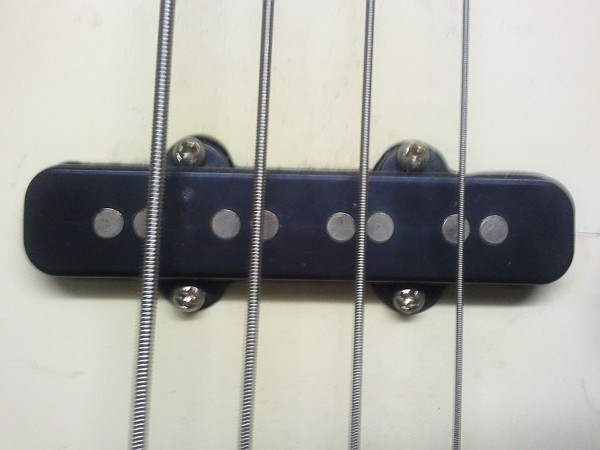Recently, I stumbled across a basic $25 electric bass in Goodwill and bought it to see what it was like. I brought it with me to visit my folks; one thing led to another and they offered to get me a much nicer Ibanez as a graduation present. I’ve been enjoying studying bass-playing techniques, but as an electronics enthusiast, I find the construction details as interesting as the musical aspects of the instrument.
When you determine the frequency range of an electric bass, for instance, you find that it covers the 60Hz US household AC power frequency. (If 60Hz were a note, it would be almost exactly halfway between A#1 and B1. Incidentally, it would also be a very precisely-played note.) For an EE type — even a Digital specialist like me — that brings up an important question. How do you filter out the 60Hz influence, when that frequency is solidly in the range of frequencies you’re interested in preserving? You can’t really use standard filtering techniques like a notch filter — in order to cut the 60Hz by 20dB or so, while not appreciably chopping the two notes on either side of it, you’d need to have a cutoff curve of something like 240dB/octave, which would be difficult to say the least.
So, how do they do it? DSP? Use super-heavy shielding for the electronics and keep the (metal) strings away from 60Hz influences? As it turns out, there’s a simpler solution — humbucking.
Humbucking relies on the use of two pickup coils per string. These are connected in series, with one coil placed in the opposite direction from the other. This geometry causes any electric field crossing both coils to be more or less canceled out: 60Hz noise from nearby AC-powered equipment will induce an in-phase current in one coil and an out-of-phase component in the other. Since the two coils are in series, these two induced currents will (nearly) cancel, greatly reducing the amount of 60Hz noise picked up by the instrument.
…Now if only there were a similarly elegant solution to help learn how to play the thing!


